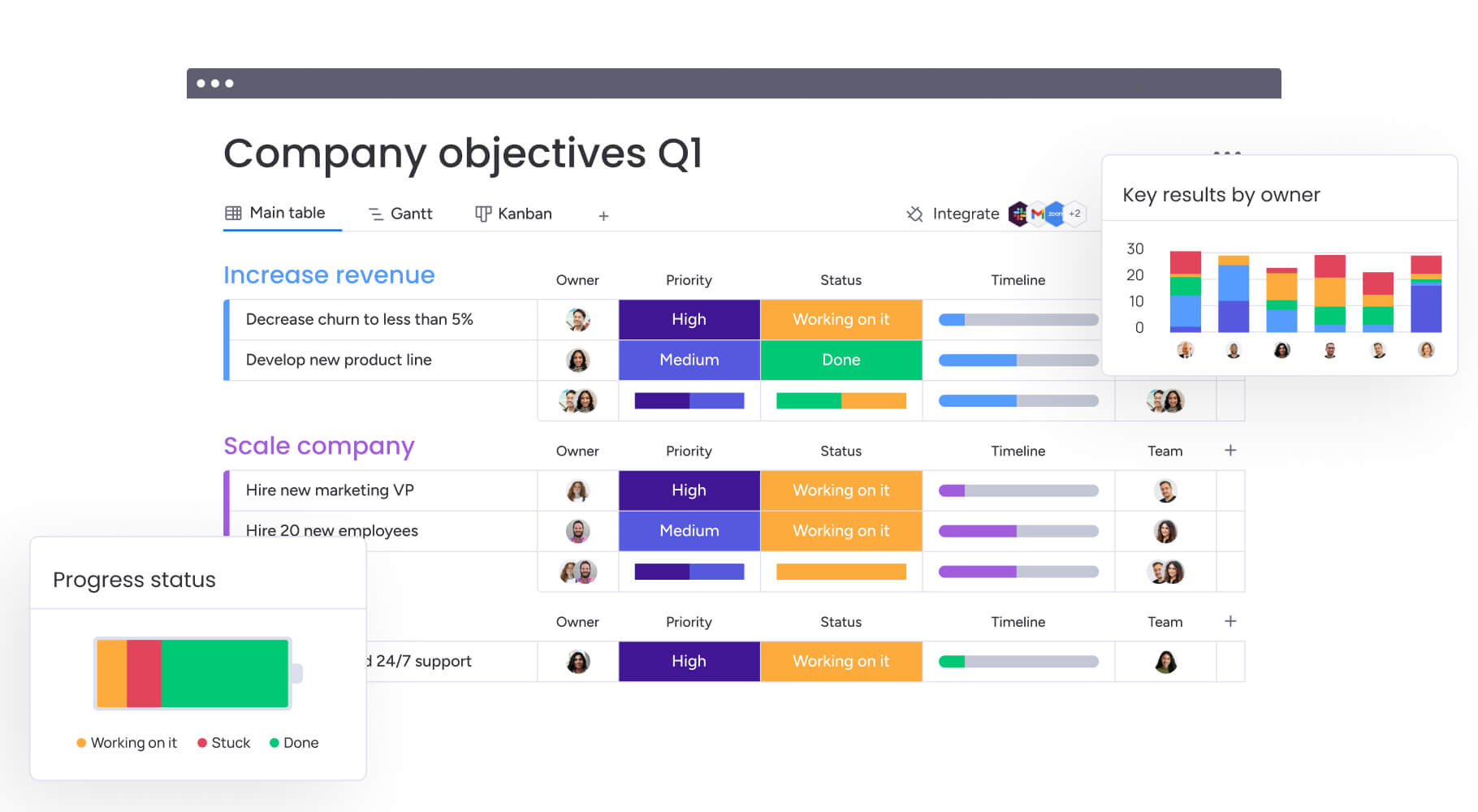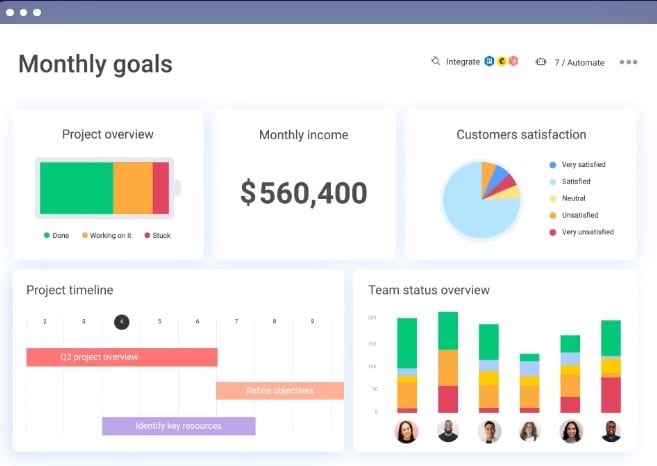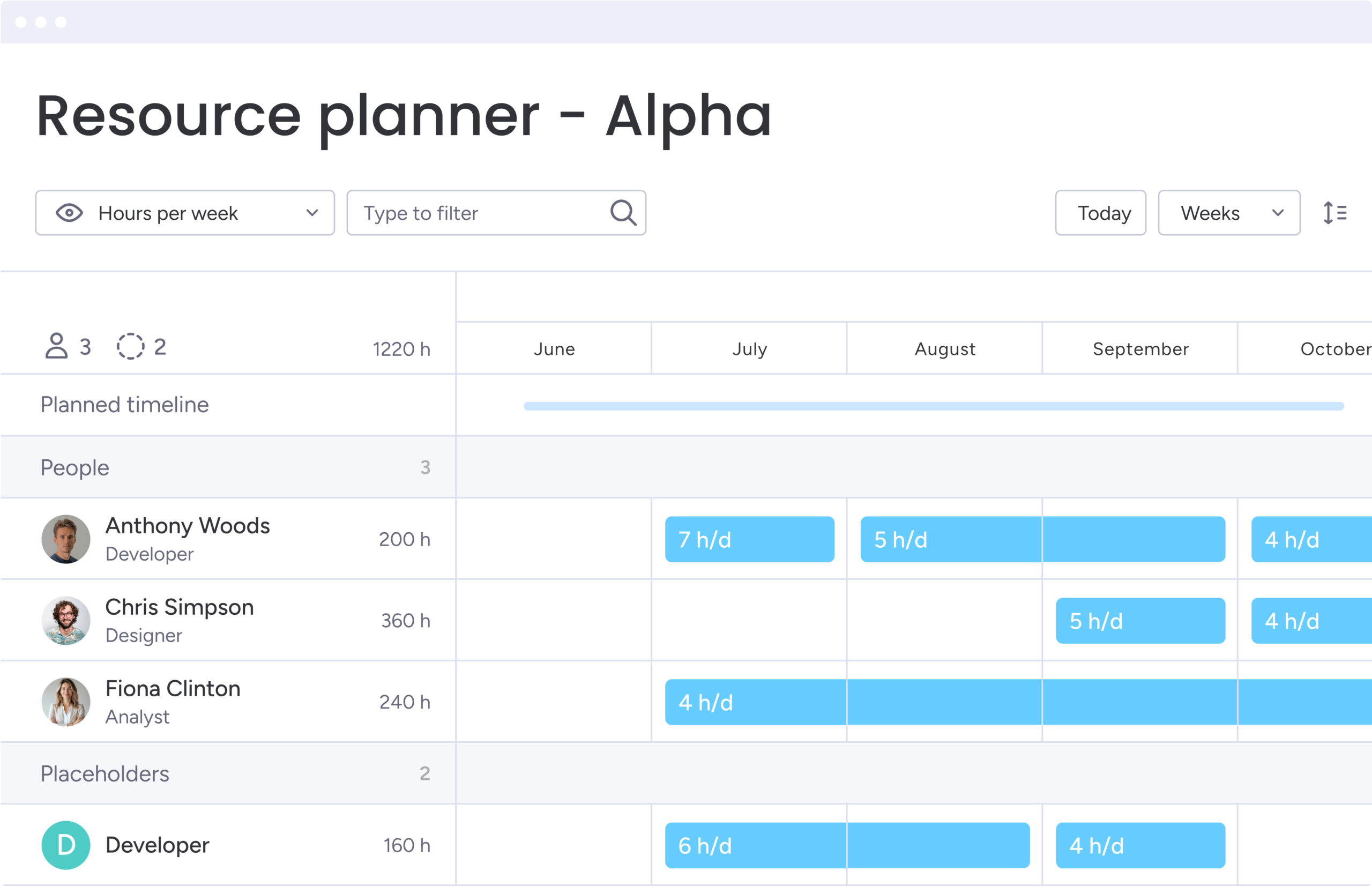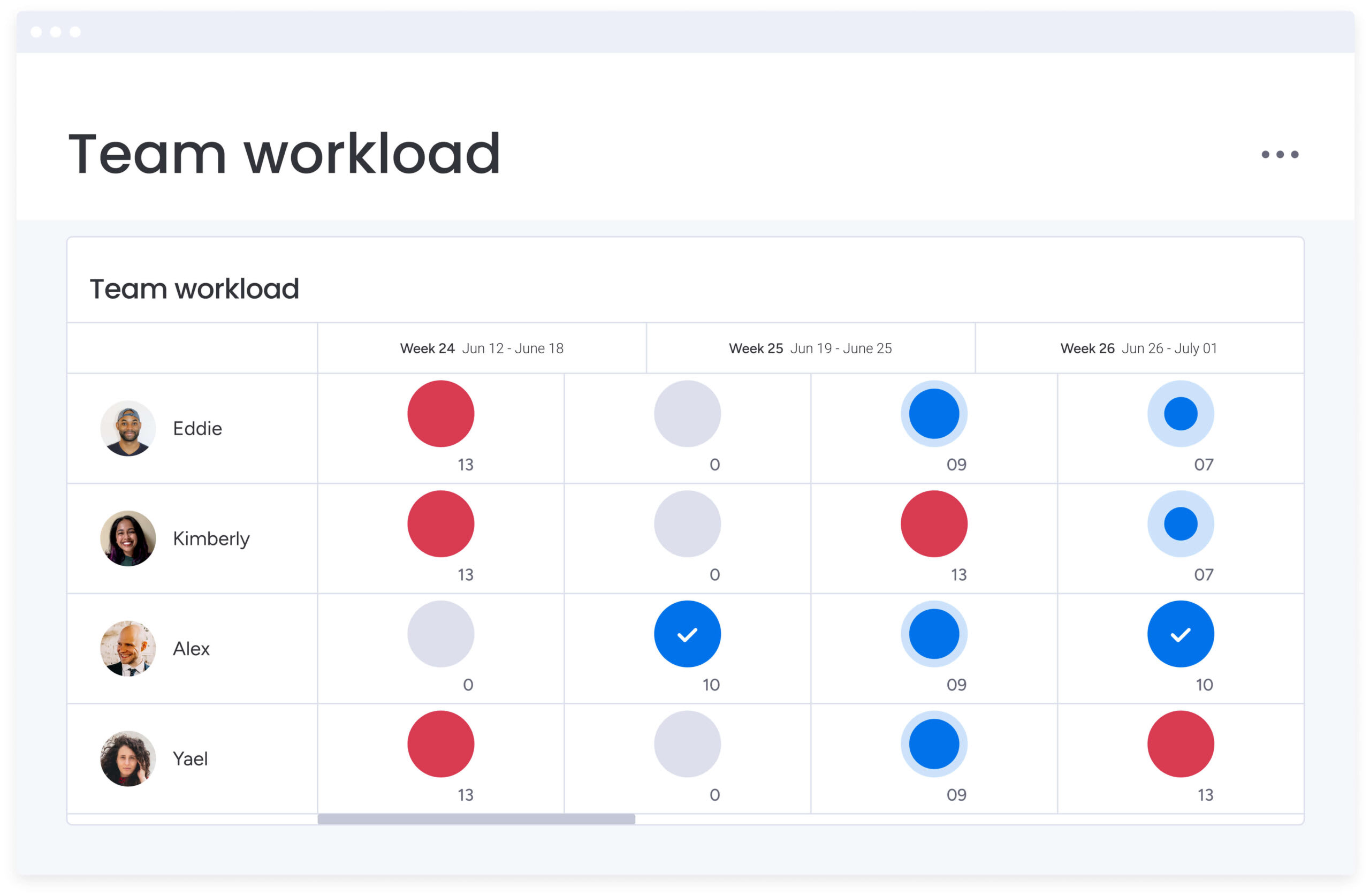Most organizations have well-defined strategic goals. Yet, a gap often exists between those high-level objectives and the daily work of their teams. This disconnect is not about a lack of effort. It is about a lack of alignment, which can slow progress and reduce employee impact.
Effective performance management closes this gap. It moves beyond outdated annual reviews to create a continuous system of communication, feedback, and development. By connecting individual contributions directly to business priorities, it ensures everyone is moving in the same direction and understands how their work matters.
This guide breaks down how to build a performance management system that drives results. We will explore the five essential stages, from setting goals to recognizing success, and review modern methods like OKRs and 360-degree feedback. You will also learn best practices for creating a culture of continuous development and how the right platform provides the visibility needed to scale your efforts.
Try monday work managementKey takeaways
- Performance management is a continuous cycle of communication, goal-setting, and development that replaces outdated annual reviews with ongoing dialogue throughout the year.
- Modern performance management transforms organizations by connecting individual work to business goals, increasing engagement and retention, and accelerating overall business performance through real-time visibility.
- The five essential stages—setting clear expectations, tracking progress, developing skills, evaluating performance, and recognizing success—create a comprehensive framework for employee growth and organizational alignment.
- Successful performance management requires shifting from judgment-focused annual evaluations to coaching-driven continuous development, supported by regular one-on-ones and data-driven insights.
- monday work management provides the scalable foundation for continuous performance management through customizable dashboards, automation, real-time collaboration, and analytics that keep teams aligned and focused on what matters most.
What is performance management?
Performance management is an ongoing process of communication between managers and employees that occurs throughout the year. This means regular conversations about goals, progress, and development — not just annual reviews. This shift is critical, as recent Gallup research shows employee engagement has fallen to its lowest level in a decade, with only 31% of employees feeling engaged at work.
Think of it as a continuous cycle that connects individual work to company success. You set expectations, track progress, provide feedback, and help employees grow their skills.

Understanding performance management
Performance management creates a system where everyone knows what success looks like. You understand your goals, how they connect to larger objectives, and what support you’ll receive along the way.
This approach replaces the old model of once-a-year evaluations with ongoing dialogue. Instead of waiting months to discuss challenges, you address them as they arise.
Core elements of modern performance management
Modern performance management rests on four key pillars that work together to drive results and foster a culture of growth:
- Transparent communication: Everyone understands expectations and can see progress in real time
- Data-driven insights: You use metrics to guide decisions rather than relying on gut feelings
- Regular check-ins: Weekly or biweekly conversations replace annual reviews
- Development focus: The emphasis shifts from judging past performance to building future capabilities
How performance management has evolved
Traditional annual reviews focused on ranking employees against each other. Modern performance management helps each person reach their potential through ongoing support.
This evolution reflects how work actually happens today. Projects move fast, priorities shift, and teams need to adapt quickly. Waiting a year to discuss performance makes no sense in this environment.
How performance management transforms organizations
When you align individual efforts with strategic goals, transformation happens. Teams move faster, make smarter decisions, and achieve measurable results.
Performance management creates this alignment by connecting daily work to bigger objectives. Every employee sees how their contributions matter.

Connecting employee work to business goals
Goal alignment means every person understands their role in company success. A sales rep knows their targets support quarterly revenue. A product manager sees how their milestones enable strategic launches.
Increasing engagement and retention
Regular feedback and development opportunities show employees you value their growth. When managers invest time in understanding goals and providing guidance, job satisfaction increases.
Engaged employees stay longer and perform at higher levels. They see a clear path forward within your organization rather than looking elsewhere for growth opportunities.
Building transparency across teams
Performance management creates visibility into who’s doing what and how it’s progressing. This transparency improves collaboration and reduces duplicated effort, a key challenge given that only 61% of employees in large enterprises are satisfied with transparency.
Teams can share updates, track progress, and maintain alignment across departments. Everyone works from the same source of truth.
Accelerating business performance
Connecting individual performance to organizational results enables faster execution. You can identify obstacles quickly, reallocate resources, and maintain focus on high-impact activities.

Real-time visibility into team capacity and progress helps you pivot strategies when needed. This agility becomes your competitive advantage.
Try monday work managementThe 5 essential stages of performance management
Performance management follows a continuous cycle throughout the year. Each stage builds on the previous one while setting up what comes next.
Step 1: Setting specific goals and expectations
Start by establishing SMART goals — Specific, Measurable, Achievable, Relevant, and Time-bound. Work together with employees to create objectives that connect to business priorities.
Clear expectations eliminate confusion — a critical factor, as employees who understand how success is measured are 2x more likely to feel motivated. Discuss not just what needs to be done, but how success will be measured and what resources are available.
Stage 2: Tracking progress in real time
Continuous monitoring replaces waiting for scheduled reviews. You can spot issues early and celebrate wins as they happen.
Real-time dashboards show exactly where you stand on goals. Teams can adjust quickly when priorities shift.
Stage 3: Developing employee skills
Identify growth opportunities through regular conversations. This might include coaching, training, or stretch assignments that build new capabilities.
Align development with both individual aspirations and business needs. When employees see how skill building advances their careers while helping the company, motivation soars.
Stage 4: Evaluating performance effectively
Use multiple data sources for fair evaluation — not just manager observations. Focus on growth and improvement rather than judgment.
Make evaluation collaborative. Employees should actively participate in assessing their progress and identifying areas for continued development.
Stage 5: Recognizing and rewarding success
Recognition goes beyond money. It includes praise, development opportunities, and increased visibility. Tailor recognition to what motivates each individual.
Timely, specific recognition reinforces the behaviors you want to see. Some employees value public acknowledgment while others prefer private feedback or new challenges.
Performance management vs performance appraisals
Understanding the difference between these approaches helps you choose the right path for your organization.
Key differences you need to know
Frequency stands out as the biggest difference. A performance management process provides continuous feedback while appraisals happen once or twice yearly.
Purpose also differs significantly. Appraisals judge past performance. Performance management develops future potential.
The advantages of a continuous approach
By the time annual reviews happen, it’s too late to fix problems or build on successes, and the long gap makes specific feedback difficult. Research validates this, showing that 95% of managers are unhappy with their current systems, and 90% of HR leaders agree that annual reviews don’t accurately reflect employee contributions.
The power of continuous feedback
Regular feedback allows immediate course correction. When you provide guidance close to events, employees can apply it right away.
monday work management integrates feedback into daily workflows. Managers can comment directly on work items, making performance conversations natural and timely.
Try monday work management6 performance management methods that work
Different methods serve different organizational needs. Most companies combine elements from multiple approaches to create their ideal system.
1. Management by objectives (MBO)
MBO focuses on setting clear, measurable goals that align individual and organizational objectives. You collaborate to establish targets, then track progress regularly.
This method works best when you need accountability and clear results. It gives employees flexibility in how they achieve objectives while maintaining focus on outcomes.
2. 360-degree feedback systems
Gather input from peers, managers, direct reports, and sometimes customers. This comprehensive view reveals blind spots and development opportunities.
360-degree feedback works well in collaborative cultures that value diverse perspectives. Just ensure feedback stays constructive and actionable.
3. Continuous performance management
Replace annual cycles with ongoing dialogue throughout the year. Regular conversations prevent small issues from becoming major problems.
monday work management supports this approach by integrating feedback and goal tracking into daily workflows. Performance management becomes part of how work gets done.
4. OKRs for performance alignment
Objectives and Key Results create focus by linking individual goals to company priorities. The transparency of OKRs helps everyone understand how their work contributes.
Quarterly OKR cycles allow regular adjustment while maintaining focus. This method promotes ambitious goal-setting and clear accountability.
5. Coaching-driven performance development
Managers become coaches who support growth rather than judges who evaluate. This approach builds stronger relationships and increases engagement.
Coaching requires different skills than traditional management. Managers need training in asking powerful questions and providing developmental feedback.
6. Real-time performance analytics
Use data to inform decisions about performance and development. Analytics help you spot trends and make evidence-based choices.
monday work management’s dashboards visualize performance data in real-time. You can track goal progress, monitor workloads, and identify development needs instantly.

Creating a continuous performance management culture
Building this culture requires changing how everyone thinks about performance and development. It’s not just new processes, it’s a new mindset.
From annual evaluations to ongoing development
Shift from judging past performance to developing future potential. This requires training managers in coaching skills and helping employees take ownership of their growth.
Regular development conversations become the norm. You address challenges quickly and adjust goals when priorities change.
Turning managers into performance coaches
Managers learn to guide rather than direct. They ask questions that help employees discover solutions instead of providing all the answers.
This coaching approach builds trust and improves communication. Employees feel supported in taking risks and trying new approaches.
Using technology for performance insights
The right platform makes continuous performance management sustainable. monday work management provides the infrastructure for ongoing feedback, goal tracking, and analytics.
Technology should integrate performance management into daily work, not create separate processes. When performance conversations happen naturally, they become more effective.
7 best practices for performance management success
These proven practices help you avoid common pitfalls and create systems that drive real results.
1. Define crystal-clear expectations
Set specific, measurable expectations for every role. Include not just what needs to be done, but how success will be measured.
Communicate expectations regularly as priorities change. This ongoing dialogue prevents confusion and keeps everyone aligned.
2. Schedule regular one-on-ones
Hold consistent check-ins, ideally weekly or biweekly. These meetings demonstrate ongoing investment in employee success.
Focus one-on-ones on the employee’s priorities and challenges, not just status updates. Build relationships while ensuring alignment.
3. Base decisions on performance data
Track metrics related to goals and development. Data provides objective information for feedback and decision-making.
Use analytics to make informed choices about priorities and resource allocation.
4. Encourage two-way feedback
Create opportunities for employees to share feedback with managers. This demonstrates respect and provides insights for process improvement.
Two-way feedback builds trust and engagement. It also helps managers understand how to support their teams more effectively.
5. Automate routine performance processes
Use automation for reminders, documentation, and reporting. This frees up time for meaningful conversations.
Automation should support human interaction, not replace it. The goal is eliminating busy work so you can focus on what matters.
6. Align individual and team goals
Cascade goals from organizational priorities down to individuals. Everyone should understand how their work supports broader objectives.
When priorities shift, goal alignment helps teams adapt quickly while maintaining focus on what matters most.
7. Measure what matters most
Focus on key performance indicators that drive business success. Avoid vanity metrics that look impressive but don’t impact outcomes.
Choose metrics that predict success and provide actionable insights. Quality matters more than quantity when selecting what to track.
Try monday work managementScale your performance management with monday work management
As organizations grow, maintaining alignment becomes challenging. monday work management provides the foundation for performance management that scales.
The performance management platform enables continuous feedback, goal tracking, and performance insights through purpose-built features. You get visibility across all levels while maintaining flexibility for different team needs.
Key capabilities that support scalable performance management include:
- Customizable dashboards: Track progress and identify trends at a glance
- Automation: Handle routine tasks so managers focus on meaningful conversations
- Real-time collaboration: Provide feedback directly on work items
- Analytics: Make data-driven decisions about performance and development
Organizations using monday work management report improved alignment and stronger business results. The intuitive interface makes it easy for everyone to participate actively in performance management.

Frequently asked questions
How often should performance management conversations happen?
Performance management conversations should happen continuously, with formal check-ins occurring monthly or quarterly depending on organizational needs. The key is maintaining regular dialogue rather than waiting for annual reviews.
What is HR's role in performance management?
HR's role in performance management involves designing the framework, training managers, and ensuring consistency across the organization. They support the process but don't replace the direct manager-employee relationship.
How do you measure performance management system effectiveness?
Performance management system effectiveness is measured through employee engagement scores, retention rates, and goal achievement metrics. Organizations should also track manager confidence and the quality of development conversations.
Does performance management work for remote teams?
Performance management works effectively for remote teams when organizations focus on outcomes rather than activities and maintain regular virtual check-ins. Digital platforms enable continuous feedback and goal tracking regardless of location.
What is the difference between performance management and talent management?
Performance management focuses on ongoing employee development and goal achievement, while talent management encompasses broader workforce planning including recruitment, succession planning, and career development. Performance management is one component of talent management.
How do you handle underperformance in performance management?
Underperformance is addressed through immediate feedback, specific improvement plans, and additional support or training. The continuous nature of modern performance management enables early identification and intervention.
